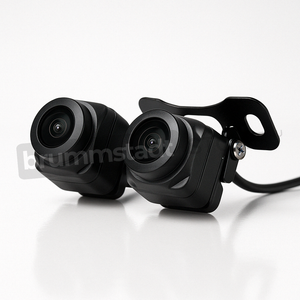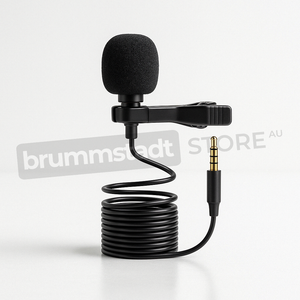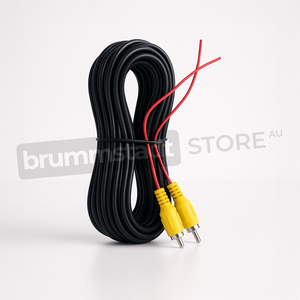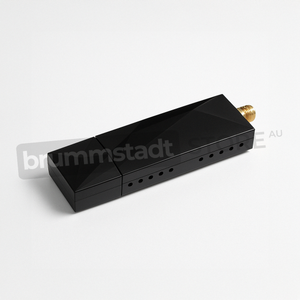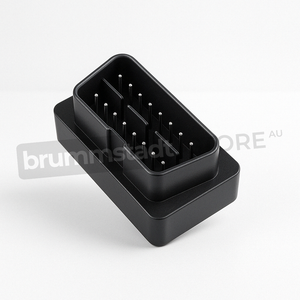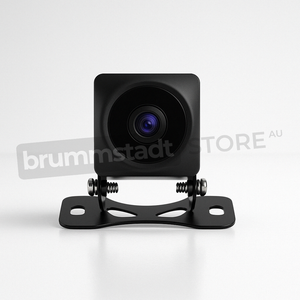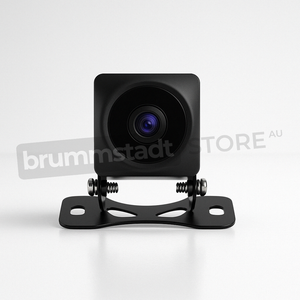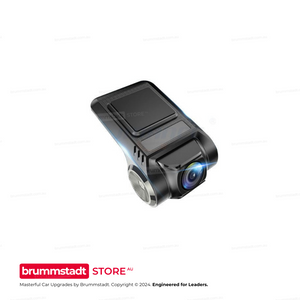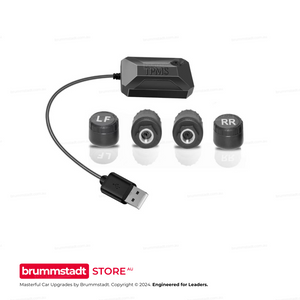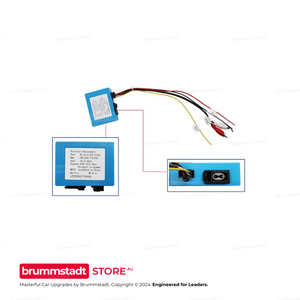Frequently Asked Questions
Everything you need to know about this head unit
Connect the single RCA cable with the yellow plug (included in your package) to extend your Bluetooth signal. This cable doubles as both a camera input AND a Bluetooth/WiFi antenna extension. The two small blue wires attached are antenna boosters that significantly improve connection stability. This simple connection takes 30 seconds and resolves 90% of Bluetooth issues. Make sure it's firmly connected even if you're not using a rear camera.
Try these proven solutions:
1. Quick Fix: Settings → Apps → Z-Link → Disable → Enable → Open (repeat each use)
2. Check Cables: Use the data/charge USB cable (not charge-only)
3. Bluetooth Setting: Disconnect all other Bluetooth connections - CarPlay needs exclusive access
4. Factory Reset Z-Link: Find the pink 'RESET' app, restart, reconnect Bluetooth, then try Z-Link
5. Sound Issues: Switch audio source to 'AUX' or 'USB/AUX' in your vehicle menu
Most issues are resolved with step 1 or 3!
The processor differs between models: The 2/32GB has a 4-Core processor, while 4/64GB and 8/128GB models feature the powerful 8-Core Cortex-A55 processor. Combined with RAM differences: The 2/32GB model with its 4-Core processor and limited RAM may experience slowdowns with heavy multitasking. The 4/64GB with 8-Core provides smooth performance for most users - no lag, seamless app switching, and enough storage for maps and music. The 8/128GB with 8-Core offers maximum performance with its generous RAM allowing unlimited multitasking and massive storage for extensive media libraries. Think of RAM like your desk space - more RAM means you can have more apps open simultaneously without slowing down.
Absolutely normal! These head units are complete replacement systems with their own GPS antenna, microphone, and Bluetooth module. Your factory connectors for these features won't be needed anymore. The important connections are: main power harness, speaker outputs, and the yellow RCA cable (even if not using a camera - it extends Bluetooth range). Any leftover factory plugs can be safely tucked away. If you're unsure about any connection, our support team is here 7 days a week.
Z-Link updates are handled through system firmware updates. Go to Settings → System → System Update. If an update is available, download it to a USB drive (FAT32 format) and install. Important: Never download Z-Link APKs from unofficial sources - they won't work and may cause issues. If you're having compatibility issues with newer iOS versions, the disable/enable workaround (Settings → Apps → Z-Link) usually resolves them while waiting for official updates.
Consider your usage:
• 2/32GB (4-Core): Budget option - fine for basic use, but may lag with multiple apps due to 4-Core processor and limited RAM
• 4/64GB (8-Core): Sweet spot - smooth Android Auto/CarPlay, multitasking, and ample storage
• 8/128GB (8-Core): Premium choice - unlimited multitasking, massive storage, future-proof for years
Most customers choose 4/64GB for the perfect balance of performance and value. The extra RAM makes a huge difference in daily smoothness!
The yellow RCA cable's blue antenna wires also boost WiFi signal! Make sure this cable is connected. Additionally, try these tips: Position the blue antenna wires away from metal surfaces, check that your phone's hotspot is set to 2.4GHz (not 5GHz) for better range, and ensure the head unit's WiFi sleep policy is set to 'Never' in Settings → WiFi → Advanced. For best performance with wireless CarPlay, keep your phone within 1-2 meters of the head unit.
Go to Settings → Sound → Equalizer and adjust to your preference. For more volume, increase the 'Loudness' setting. The 4/64GB and 8/128GB models have superior audio chips that provide cleaner, louder sound. If you have an amplifier, use the RCA outputs for best quality. Also check Settings → Factory Settings (password usually 126) → Audio settings for additional gain controls. Remember: higher-spec models (4GB+) include premium audio components for noticeably better sound.
Yes! Most vehicles work instantly. If not, use the steering wheel learning app: tap the steering wheel icon, press each button on your wheel, and assign functions. For newer vehicles with CANbus, we provide CANbus modules for automatic setup. Some vehicles may need the Key1/Key2 wires connected (usually included in our harness). If you're having trouble, let us know your exact vehicle model and we'll provide specific instructions.
We offer a 30-day return policy. If it doesn't fit or there's a compatibility issue, we'll work with you to resolve it. If you change your mind, a 20% restocking fee applies. Our team verifies compatibility before shipping to minimize issues. We provide installation support 7 days a week to help resolve any problems. With our 3-year warranty and Australian-based support, you can purchase with confidence. Full details in our Refund Policy.
Historical Background and Model Evolution:
First Generation Hyundai Tucson (JM; 2004–2009)
Before the ix35, the international market knew Hyundai's compact SUV as the Tucson. At its initial launch in 2004, the Tucson quickly gained a favorable reputation for combining practical size and reliability with affordability and versatility. Offered initially with petrol and diesel engine alternatives, this early SUV positioned itself as an approachable yet capable option suited equally to city environments and occasional adventures off-road. Its solid reputation arose from dependable mechanical performance and a thoughtfully designed interior, tailored to families, young drivers, and those seeking utility without compromising everyday comfort.
Second Generation - Hyundai ix35 (LM; 2009–2015)
In 2009, Hyundai chose a significant shift by naming the second generation "ix35" for markets outside North America, including Australia, Europe, and several Asian regions. While North America retained the Tucson name, both variants shared core engineering fundamentals, albeit with mild styling and feature differences tailored to regional tastes.
Hyundai designed the ix35 specifically to suit drivers demanding elevated comfort, technology, practicality, and design. The vehicle represented Hyundai’s then-new "Fluidic Sculpture" design language, a philosophy highlighting dynamic shapes, sweeping curves, and aerodynamic efficiency. Offering improved ride quality, reduced NVH (noise, vibration, harshness) levels, and substantial interior refinements, the ix35 secured Hyundai's place firmly amid an ever-competitive compact SUV segment.
LM1 ix35 (2009–2013)
The initial ix35 LM1 release offered well-regarded engine options, including economical petrol and diesel engines whose power and efficiency appealed broadly to buyers in Australia and Europe. Enhanced cabin ergonomics, excellent cargo versatility, comfortable driver and passenger accommodations, and practical technologies positioned the model strongly among family car buyers.
LM2 ix35 Series 2 Facelift (2013–2015)
Hyundai refreshed the ix35 with its "Series 2" (LM2) update onwards from 2013, subtly fine-tuning exterior styling details including LED-accented lighting, revised grille treatment, and improved interior materials and ergonomics. Enhanced suspension refinements produced improved vehicle dynamics, offering smoother ride quality and assured handling, better suited to both urban and highway journeys. Additional driver-assistance options, upgraded multimedia interfaces, and incremental performance refinements further lifted the model’s desirability, appealing particularly to families and buyers prioritizing comfortable, reliable daily use with contemporary technology.
Product Integration - Brummstadt Premium Head Unit Upgrade
While Hyundai's original infotainment systems were adequate for their era, advancements in smartphone integration, in-car navigation reliability, and overall multimedia connectivity quickly shifted consumer expectations. To fully realize modern infotainment potentials, many ix35 drivers today look toward carefully designed aftermarket head units. One suitable example emerges notably from Brummstadt, designed explicitly to complement Hyundai ix35 (LM1 and LM2) models with thoughtful attention to integration ease and aesthetic harmony within the original dashboard architecture.
This Brummstadt premium head unit seamlessly supports both wired and wireless Apple CarPlay and Android Auto compatibility. Owners can effortlessly utilize navigation applications such as Google Maps, Apple Maps, and WAZE, transitioning naturally from smartphone preparation directly onto the vivid, high-resolution head unit display. Imagine a relaxed dinner scenario: family members dine out, casually deciding afterward to visit friends. Before leaving the restaurant, they quickly select their friend's location via smartphone apps. As they enter the vehicle, the navigation interface appears effortlessly and wirelessly on the large Brummstadt head unit screen, ensuring an effortless transition from dining experience to relaxed car travel without inconvenience or distraction.
Furthermore, the Brummstadt unit promotes safety and peace-of-mind options through an available 1080p high-definition recording camera capability for both front and rear—supplying clarity, evidence preservation, practical parking aids, and optimized visibility on packed urban roads or during rural travels. Entertainment beyond audio and visual media also becomes possible, as the Brummstadt platform allows USB joystick controllers to connect comfortably, enlarging family road trips into engaging multiplayer gaming experiences directly via the clear infotainment display.
Moreover, its smart voice-control function leverages familiar assistants such as Siri and Google Assistant, effectively managing media playback volume, phone contact searching, navigation direction amendments, and even interactive connectivity with home automation systems. A simple spoken command such as "Hey Siri! Turn on porch lights" prepares homes for arrivals, demonstrating practical ways intuitive in-car technology comfortably integrates into daily lifestyles.
Significant Benefits and Overall Advantages
The Hyundai ix35 LM Series represents vehicles known primarily for family-friendly adaptability, practical cabin designs, balanced road performance, fuel-efficient engine options, and visually appealing styling. For owners, everyday satisfaction centers on comfortable journeys, reliability, versatile cargo management, and thoughtful ergonomics. Hyundai's engineering provided remarkable durability and dependability in demanding everyday usage scenarios, cementing owner affection and boosting customer satisfaction and loyalty significantly.
Beyond original factory standards, aftermarket integration of modern head-unit systems especially adds considerable value. Contemporary interfaces, consistently updated navigation applications, entertainment versatility, broader smartphone connectivity possibilities, and sophisticated voice management all dramatically improve the driving and ownership experience over the standard factory setup. By introducing thoughtfully selected upgrades compatible with ix35’s unique dashboard architecture, drivers enjoy more tranquil daily commutes, enriched family interactions, reliable real-time traffic planning, and added practical driver awareness features.
Throughout its journey, from Tucson's initial reliability focus to ix35 LM Series advanced cabin refinement and technological progression, Hyundai’s compact SUV legacy demonstrates thoughtful evolution firmly responding to shifting global buyer preferences. In its modern interpretation, buyers continue finding remarkable balance—combining emotional appeal, practical utility, intelligent technology, and dependable road demeanor into a fulfilling, long-lasting ownership experience.















